Termite Inspections
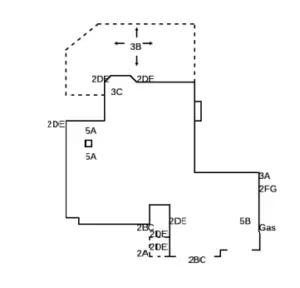 Wood Destroying Organism (WDO) Reports
Wood Destroying Organism (WDO) Reports
According to the State of California Department of Consumer Affairs Structural Pest Control Act, a Wood Destroying Organism (WDO) report, commonly referred to as a termite report, must be written and provided to the person who requested the termite inspection within 10 business days of the inspection. A filing fee of $4 per report is assessed. Failure of a registered termite company to report and file with the Board could result in a fine of $2,500.
Reports must be submitted before any work can be completed. Termite reports must be retained by the termite company for a period of three years.
All reports must include:
- A General Description of the Property:
- The report must include basic details about the property being inspected.
- The Person Requesting the Inspection:
- The name of the individual or entity that requested the inspection must be clearly stated.
- Findings and Recommendations:
- All observed findings related to wood-destroying organisms or conditions conducive to infestations must be documented.
- Recommendations for corrective measures must also be included.
- A Diagram of the Property:
- The diagram must indicate the approximate location of any areas infested or infected.
- Inaccessible Areas:
- The report should identify areas that were inaccessible during the inspection and explain why they could not be inspected.
- Conditions Likely to Lead to Infestations or Infections:
- Any conditions that could potentially lead to future infestations or infections must be noted.
- Roof Surface Inspection:
- The report must indicate whether or not the exterior surface of the roof was inspected.
Exceptions
If a customer is under warranty and a subsequent inspection is completed with no new findings, then a new report is not required.
 Findings and Notes in a Termite Report
Findings and Notes in a Termite Report
In a termite report, findings refer to organisms that damage wood—like termites or fungus—or conditions that could lead to those issues. Notes are disclaimers that explain inspection limitations.
There are two main systems for organizing findings: the 1–5 system, which California Termite uses, and the 1–11 system.
- In the 1–5 system:
- Subterranean termites
- Drywood termites
- Fungus/rot
- Conditions conducive to infestation (e.g., wood-to-soil contact)
- Inaccessible areas
The 1–11 system organizes findings by areas of the structure (e.g., attic, crawlspace, patio), but since these areas are already labeled on the graph portion of the report, it can feel redundant.
Findings are lettered in sequence. For example:
- A 2A on the graph means drywood termites were found in that area.
- A 2B in the same spot would refer to related wood damage.
Notes highlight anything that may limit or affect the inspection—such as insulation obstructing the attic, excessive storage in a garage, or the presence of roofing materials preventing roof surface inspection. Additionally, that fences are typically excluded, as they aren’t considered part of the structure.
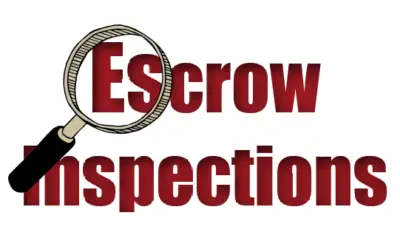 Escrow Inspections
Escrow Inspections
In a real estate transaction or a Veterans Administration (VA) refinancing, an escrow inspection—including a Wood Destroying Organism (WDO) report—is typically required by lenders, though not mandated by the state of California. This inspection helps identify potential structural risks related to termites and other wood-destroying organisms before the property changes hands.
Findings in an Escrow Inspection
A WDO report includes two categories of findings: primary and secondary, if applicable.
- Primary Findings: These include any active infestations of termites or other wood-destroying organisms, fungal infections, and any damage caused by these issues.
- Secondary Findings: These refer to conditions that could contribute to future infestations or infections, along with potential resulting damage. Examples include:
- Earth-to-wood contact
- Excess moisture
- Faulty grades (improper ground slope)
- Cellulose debris (wood scraps, paper, or other organic materials that attract termites)
The inspector documents these findings on a detailed diagram of the property, which is included in the report.
Treatment and Repair Recommendations
Along with the findings, the WDO report outlines the inspection company’s recommended treatments and repairs, along with associated costs. This helps buyers, sellers, and lenders understand what actions may be needed to protect the home from termite and moisture-related damage.
Inaccessible Areas
The report also specifies areas that were not accessible during the inspection and the reasons why. Examples of inaccessible areas include:
- Eaves blocked by dense vegetation
- Crawl spaces too small to enter
- Garages cluttered with belongings
- Wooden flooring covered with carpeting
In cases where significant areas were inaccessible, the inspector may recommend further inspection once access is available.
Repair and Treatment Requirements for Escrow
While California law does not require that treatments or repairs be completed before a property sale, most lenders do require them before the close of escrow. Once the necessary treatments and repairs are performed, the company that conducted them will issue a completion report and clearance for the buyer to present to their lender.
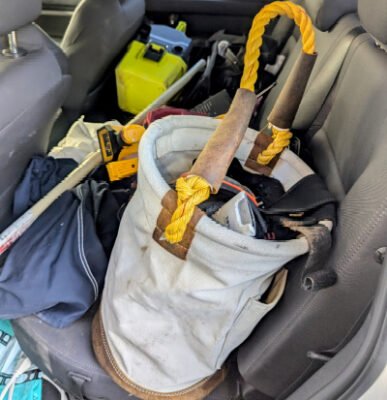 Termite Inspection Equipment
Termite Inspection Equipment
A thorough termite inspection requires the right tools. The following equipment is essential for conducting a proper inspection:
- Painter’s Poles – Two extendable poles: one that extends from 4 to 8 feet for first-story eaves, and another that extends from 8 to 16 feet for second-story eaves.
- Flashlight – A high-powered, rechargeable flashlight for inspecting attics, crawlspaces, dark-painted eaves, and hard-to-reach areas behind appliances.
- Ladder – A sturdy A-frame ladder that extends between 12 and 18 feet.
- Chalk – To mark termite-infested areas for reference.
- Phone with Camera – For documenting evidence of infestation.
- Clipboard & Graph Paper – To sketch the structure and note findings.
- Erasable Pens – Allows for easy corrections while documenting.
- Measuring Wheel – To accurately measure the structure you’re inspecting.
- Tools – To open crawl hatches, termite galleries, etc.
- Magnifying Glass – Helps with identifying insects up close.
- Mirror with Light – Useful for checking above ledges for termite droppings.
- Knee Pads – Protects knees when crawling through attics and crawlspaces.
 Probing for Termites
Probing for Termites
Probing exterior wood members—such as fascia, rafter tails, and other exposed structural elements—is the most common method termite inspectors use to detect termite activity on a home’s exterior. Most inspectors carry two extendable poles: one about five feet long for first-story eaves and a ten-foot pole for upper stories. Some also attach a probing tip to the end of their pole.
The inspection process typically begins at one corner of the home, with the inspector systematically tapping each wood member around the perimeter. If the home has a second story, they complete the first-story inspection before switching to the longer pole to probe the upper level. This process can be particularly strenuous on homes with multiple exposed wood components in the eaves. While some homes have a simple fascia board running along the exterior, others feature a more complex arrangement, including blocking, rafter tails, starter boards, outriggers, fascia, and fascia trim. When probing second-story wood with the heavier, longer pole, inspectors often need to take occasional breaks.
Probing doesn’t require excessive force. If the wood is solid, nothing happens. If termites are present, even a light tap can cause the wood to crack. Occasionally, what appears to be intact wood will break apart, releasing thousands of termite droppings. (For a termite inspector, finding droppings in their hair at the end of the day is a sign of a successful inspection.)
There’s no need to probe wood that is visibly infected with fungus or already showing clear termite damage. Some inspectors who offer wood repair services claim they must determine the full extent of the damage, but that doesn’t mean they should leave your eaves in ruin.
In attics and garages, probing is rarely necessary. Instead, inspectors look for telltale signs like termite droppings to assess activity.
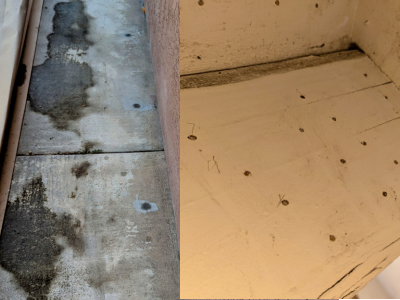 Drill Holes
Drill Holes
Drill holes are an important clue a good termite inspector looks for when evaluating a home. They often reveal whether and how a property has been treated in the past.
For drywood termites, holes are drilled directly into the wood—typically about ⅛ inch wide—and then sealed with caulk after treatment. For subterranean termites, holes may be drilled through pavement or concrete to reach the soil below. These holes are larger, about the size of a dime, and are usually patched with concrete once the treatment is complete.
If a section of wood shows termite damage and drill holes are present, the inspector should ask the homeowner when that wood was last treated. The same goes for subterranean treatments: if conditions are conducive for termites but there’s no visible activity—and patched areas are noticeable on sidewalks or slabs—it’s wise to ask when the soil treatment was performed.
Because the professional-grade chemicals used in termite treatments can remain effective for years, these questions help determine whether an infestation is truly active or if it may already have been addressed.
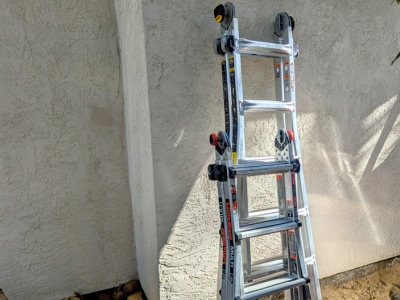 Ladders
Ladders
The three most essential tools a termite inspector carries are a ladder, a flashlight, and a probing stick. Of the three, the ladder is number one. Without it, you can’t access an attic—where you’ll need the flashlight—and while some inspectors skip probing (though they shouldn’t), nobody can skip the ladder.
The best type of ladder for inspections is a folding extension ladder. It’s versatile, sturdy, and can be set up in different ways to reach attic entrances that come in all shapes, sizes, and heights. Sturdiness is especially important since ladders are sometimes placed on uneven surfaces.
The trade-off is weight. The best ladders are heavier and harder to carry, but their reliability and versatility make them worth the extra effort.
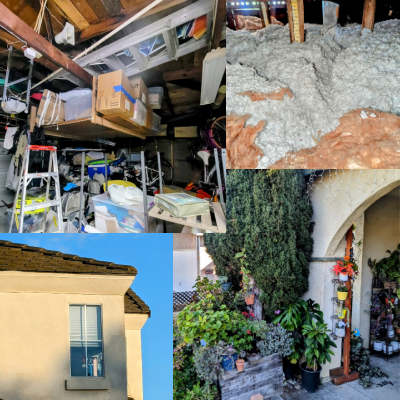 Inaccessible Areas
Inaccessible Areas
The primary reason fumigation is the California Structural Pest Control Board’s top recommendation is that much of a home’s framing is inaccessible. However, it’s not just walls that block access—many other factors can make a thorough inspection and treatment difficult or even impossible.
- Storage in garages and attics can obstruct key areas.
- Vegetation around the home may block the foundation and eaves.
- Sheds and outdoor storage placed against the home can limit inspection.
- Patio covers can make second-story eaves unreachable.
- Homes built on hills or with third stories may have eaves that are completely inaccessible.
- Slab foundations prevent inspection of the home’s plumbing.
- Ductwork in crawlspaces can block access to certain areas.
- Rooflines meeting rafters create tight, hard-to-reach spots where an inspector may only be able to shine a flashlight.
- Chimney framing may show signs of infestation, but treating it is often impossible.
- Attic insulation covers roughly 50% of rafters, while blown-in insulation hides even more.
- Wood flooring is concealed under furniture and carpets.
- Some homes have no exposed wood at all, with stucco-covered eaves and no attic access.
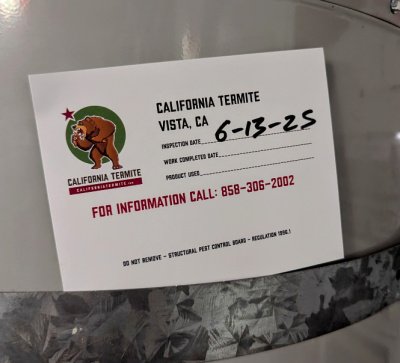 Termite Inspection Tags
Termite Inspection Tags
Whenever a termite inspection is performed, a tag should be left behind—typically in the garage, attic, or crawlspace. This tag includes the termite company’s name, phone number, and the date of inspection. If the homeowner moved forward with the recommended treatment, the tag should also note the date the work was completed and list the chemicals used.
These tags are valuable to inspectors. They help determine whether a property has been inspected previously, which company did the work, and—most importantly—what products were applied. For example, if a tag indicates that a borate treatment was done recently and the attic was found to be clear of termites, reapplying borates may be unnecessary. A properly applied borate treatment can remain effective for many years, even indefinitely.
You’ll also notice a sentence on the tag: “Do not remove – Structural Pest Control Board – Regulation 1996.1.” While it carries regulatory weight, it’s not unlike the warning tag on a mattress—it’s more about compliance than consequence.
 Fumigation Tags
Fumigation Tags
Fumigation completion tags are usually stapled in the attic entrance or in the garage. These tags are white with red lettering and provide key details: the date of fumigation, the type of fumigant used, the fumigation company that performed the work, and the termite control company that ordered it.
These tags are important because, unfortunately, not all termite companies return after fumigation to clean up or mask old termite evidence. For example, if an inspector finds termite droppings in an attic that was fumigated within the last two or three years, those droppings are likely old and inactive. In cases like this, the fumigation tag helps provide context.
After two years, that tag may be the only remaining proof of fumigation. The State of California only retains fumigation records for two years, and termite companies are only required to keep their records for three.
 Heat
Heat
It rarely gets too hot in San Diego—unless you’re in an attic.
Not all attics are scorchers, though. Some are surprisingly comfortable, especially those lined with SilverTech radiant barriers. Every now and then, you climb up expecting to get blasted with heat, only to find it cool and comfortable. That’s not always a good sign. I’ve been in attics where broken ductwork was unknowingly pumping cold air into the space—essentially air conditioning the attic without the homeowner realizing it.
Still, no matter how hot an attic gets, a termite inspector only spends a fraction of the time up there compared to a termite technician. Inspecting an attic is one thing. Treating it—say, applying borate to every rafter and joist on a 90-degree July afternoon—is a whole different experience.
Some attics are so brutally hot, you wonder how termites could possibly survive in them. But they do. Drywood termite swarmers often enter through attic vents, land on the nearest piece of wood, and settle in. Ironically, in the hottest attics, you can sometimes feel a slight breeze of cooler air coming through the vent—that’s usually where you’ll find evidence first.
Occasionally, a homeowner will say, “You can skip the attic—it’s too hot today.” But there’s too much potential activity in an attic to pass it up. Very few homeowners ever crawl their attic space, so it’s up to us to make sure nothing’s hiding up there. No matter how uncomfortable it is, it’s a critical part of a thorough inspection.
And when I’m sweating it out in an attic that feels more like a sauna, I just remind myself: At least I’m not inspecting in Phoenix.
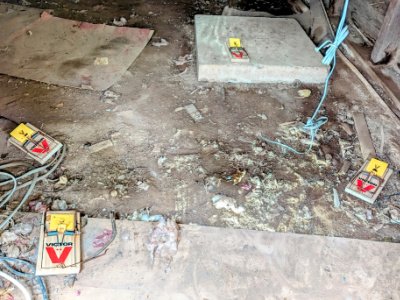 Rodent Traps
Rodent Traps
You haven’t truly inspected a home for termites until you’ve placed your hand in a rat trap or knelt on a glue board. Attic entrances are often lined with traps, and sometimes all you’re trying to do is get the lid open without injury. Crawlspaces are dark, your light isn’t always pointed where it needs to be—and traps aren’t always where you expect them. Still, I’d rather get snapped by a trap than stumble across what it was meant to catch.
Glue boards are a different kind of awful. Even without a rodent, they’re usually coated in every creepy crawler that calls the attic home.
At California Termite, we’re a high-service company. That means we often remove what others leave behind. We’re already in the attic, already dusty and dirty, and most homeowners don’t want to deal with a decomposing rodent. We don’t mind helping—but we do wonder: why isn’t the company that set the traps also checking them?
Working in attics and crawlspaces might sound rough, but I was on a cross-country flight recently, feeling bad for the crew and surprisingly grateful to be in the termite industry.
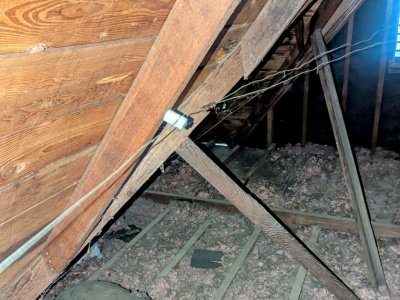 Knob-and-Tube Wiring
Knob-and-Tube Wiring
Knob-and-tube is an outdated wiring system that uses ceramic knobs and tubes to support and insulate electrical wiring.
In homes built before 1950, you may still see it in attics and crawlspaces. Although it’s been replaced by modern wiring, the old lines are often left in place.
Dormant or not, the wiring can look ominous. Attics are already full of hazards that termite inspectors must watch for — exposed nails, truss plates, rodent droppings… If exposed, live, electrical wiring was added to the mix, it might be enough to convince some of us to find another profession.
Plumbing
In most cases, plumbing isn’t part of a termite inspection—unless it’s for escrow. During escrow inspections, we check under every sink for leaks and wood rot, test for loose toilets, and conduct shower stall tests.
If the home has a crawlspace, it’s crucial to observe the soil conditions. If the ground is damp despite a lack of recent rain and no nearby planters, a plumbing leak is the likely culprit.
Even in a standard inspection, identifying excess moisture from plumbing issues is essential. Moisture is the driving force behind termite infestations and wood rot. Where there’s termites or fungus, there’s moisture. More often than not, tracing the problem leads back to a plumbing issue.
Left unchecked, a leak will eventually saturate the soil beneath a home, attracting subterranean termites. If framing is nearby, the added moisture can also fuel a drywood termite colony. Even the smallest leak can escalate into thousands of dollars in termite treatments and wood repairs—costs that homeowners insurance won’t cover.
 Chimney Tubes
Chimney Tubes
Ask any seasoned termite inspector which part of an attic they check first—if one exists—and they’ll likely say the framing around a chimney tube. Experience shows that nine out of ten chimney tubes have drywood termite activity, some of which is inaccessible for treatment. While an inspector’s goal is often to find an alternative to fumigation, an active infestation around a chimney tube presents a challenge. If visible termite droppings aren’t masked and appear to be coming from inaccessible wood members, fumigation is the only viable solution.
The framing around a chimney tube is particularly vulnerable to drywood termites for several reasons. The wood is typically unpainted, providing an easy entry point. Additionally, the heat from the chimney creates temperature fluctuations that can lead to condensation. While drywood termites don’t require much moisture, they thrive in wood that isn’t completely dry. The slight condensation produced when a fire burns can create just enough moisture for a colony to establish and persist.
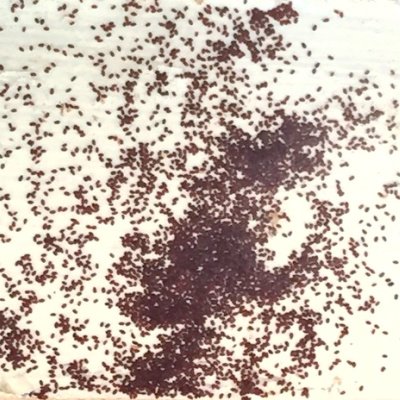 Cricket Droppings
Cricket Droppings
Cricket droppings are a litmus test for both the experience and honesty of a termite inspector. They often appear in concentrated piles, sharing the same size and consistency as termite droppings. However, unlike termite droppings, cricket droppings are black and can sometimes be found in areas with no nearby wood.
Drywood termite droppings, on the other hand, are made of wood, which means they take on the natural color of wood. Since wood is only black if it has been painted, and termites eat from the inside out—avoiding paint—their droppings will never be black.
Let’s be honest—termite inspectors get excited when they find a pile of termite droppings. But cricket droppings? They’re fool’s gold—completely worthless in the context of termites and termite treatments. Unfortunately, some inspectors won’t let a small detail like color get in the way of making a sale. And in all the termite training I’ve attended, cricket droppings have never even been mentioned.
If a termite inspector points to black droppings as evidence of an infestation requiring treatment, they’re either inexperienced or dishonest—either way, probably not someone you want to trust with your home.
 Knee Pads
Knee Pads
The only safe place to apply your weight in an attic is on a rafter—anywhere else, and you might find your foot poking through the ceiling into the room below. As an inspector, you’re lucky if you can stand up at all in an attic; most require crawling. And while Douglas fir is classified as a softwood, it certainly doesn’t feel soft on your knees.
This is why, if you’re having your home inspected for termites, you’ll likely see the inspector strapping on a pair of knee pads before entering the attic. In fact, if it were my home and an inspector didn’t wear knee pads, I’d question whether they completed a thorough inspection.
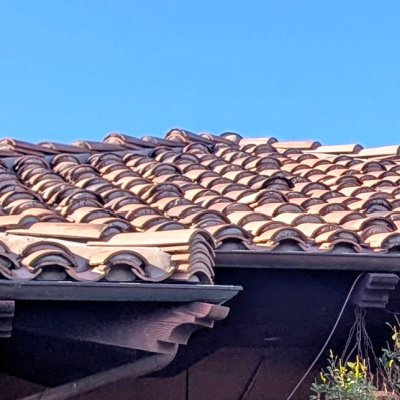 Roofs
Roofs
Every termite report includes a disclaimer like this: “The exterior surface of the roof was not inspected.” That’s because there’s no way to assess a roof’s exterior without removing its overlay. Even roofers can’t determine the extent of rotted sheathing until they remove the top layers.
The underside of the roof sheathing can be inspected if it’s accessible from the attic. However, spot treatments in this area can be tricky since the wood is thin—drill too deep, and you’ll create a hole in the roof.
Roofing material also plays a role in termite treatment, particularly fumigation. Composition shingles and flat roofs pose no issues, but steel roofs can be problematic if they are installed on purlins instead of roof sheathing. Tile roofs, however, are the biggest concern.
Fumigators need to walk on the roof to install the tent, and fragile roofing materials increase the risk of damage. For cement and standard clay tile roofs, fumigators typically offer tile insurance, covering the cost of replacing any cracked tiles. Without insurance, the homeowner is responsible. However, most fumigators won’t insure double-stacked clay tile roofs. If you have one, it’s best to wait until you’re ready to replace your roof before scheduling a fumigation.


